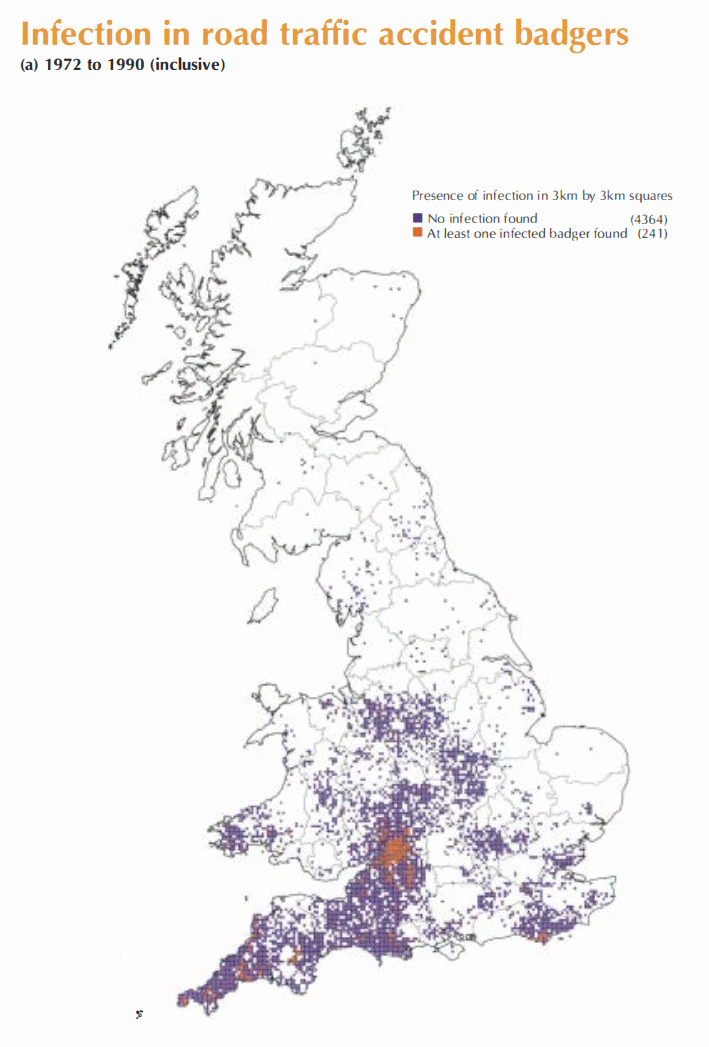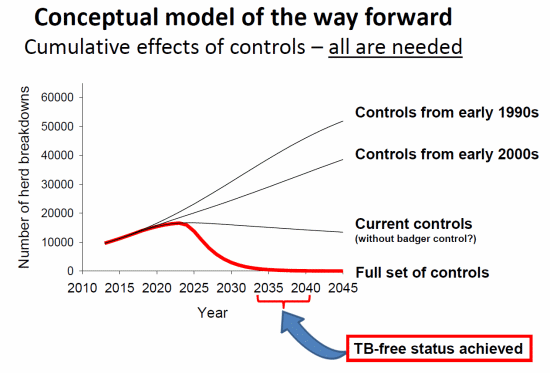Cattle movements and TB restricted herds
What is a cattle movement?
The British Cattle Movement Service defines an "off" and "on" cattle movement as follows.8
What counts as a movement?
Whenever cattle move off one holding and on to a different one:
Whenever cattle move off one holding and on to a different one:
- their keeper at the departure holding must report and record an 'off movement'
- their keeper at the destination holding must report and record an 'on movement'
Lancashire had the highest number of "on" cattle movements in 2010, 2011 and 2012
Lancashire had the highest number of "on" cattle movements per square kilometre out of all English counties in 2010, 2011 and 2012.Cumbria and North Yorkshire also lie in the top ten counties for "on" cattle movements.
This is illustrated in the following thumbnail. Click it to see the charts clearly.
Lancashire, Cumbria and North Yorkshire have had very low levels of TB
Between 1998 and 2010 Lancashire had very low levels of TB. The following table shows where Lancashire was ranked in all counties of England for its percentage of TB restricted herds. These restrictions were imposed for disease and do not include restrictions for late testing.| Year | Rank |
|---|---|
| 1998 | 16 |
| 1999 | 26 |
| 2000 | 28 |
| 2001 | 34 |
| 2002 | 32 |
| 2003 | 34 |
| 2004 | 35 |
| 2005 | 31 |
| 2006 | 28 |
| 2007 | 33 |
| 2008 | 37 |
| 2009 | 34 |
| 2010 | 29 |
Lancashire is the closest, low-risk, high-cattle-density county to the high risk area (HRA) and so is one of the most vulnerable to cases introduced by cattle-to-cattle transmission. However Cumbria recorded a larger number of badger road traffic accidents up to 19909 as shown in the thumbnail below so maybe more vulnerable to pockets of persistent TB forming. Click the map to see a larger view.

The following thumbnail shows how the number of TB restricted herds has changed since 1998 in Lancashire.
In Nov 2014 the percentage of herds which were TB restricted in Lancashire was about 0.5. In Devon that percentage was about 30 times greater at about 15. This is illustrated in the thumbnail below.
The number of total tests on herds in Lancashire and Devon are shown below.
Cumbria and North Yorkshire also have a very low number of TB restricted herds as can be seen in the charts shown above.
Sources of data shown in the above table and charts
| Quantity | Reference |
|---|---|
| Cattle movements | 1 |
| County areas | 6 |
| TB restricted herds | 2 |
| Herd numbers | 3 |
| Herd graph | 4 |
| Premise type breakdown | 5 |
Conclusions
The very large number of "on" cattle movements in the counties of Lancashire, Cumbria and North Yorkshire and their very low number of TB restricted herds illustrate that in England there is weak correlation between the number of cattle movements and TB restricted herds in areas where badger TB is considered low. Since the 1980's, effort has been concentrated on tightening cattle controls. Unfortunately during this time TB levels have soared as can be seen in the thumbnail below.Collectively, this implies that in the fight to control TB in England, the potential impact for the additional cattle controls which have been and are destined to be introduced in the absence of widespread and effective badger culling in High Risk Areas [current date 13Feb2015] will be rather limited. In 2013/14 the DEFRA budget for developing culling methods was only 1% of the budget targeted at vaccination options.10,11 In November 2014 the Chief Scientific Adviser for DEFRA, Professor Ian Boyd, presented a slide at a Bovine TB Science Conference which showed the following schematic.7 Note the limited progress which is expected without badger control.
 However if TB spreads into Lancs, Cumbria and North Yorks,
the number of herd breakdowns is likely to rise further
rather than decline. This may happen if the current [13Feb2015] reluctance
and lack of commitment to address TB in the high risk, source areas continue.
However if TB spreads into Lancs, Cumbria and North Yorks,
the number of herd breakdowns is likely to rise further
rather than decline. This may happen if the current [13Feb2015] reluctance
and lack of commitment to address TB in the high risk, source areas continue.
References
- Cattle movements in Great Britain in 2010, 2011 and 2012. FoI request to AHVLA. ATIC0148. 2 August 2013.
- County herd statistics downloaded from the old AHVLA database (VETNET) on 7th March 2011.
- Cattle herds under TB restriction from 1998 to 2008.
- TB restricted herds in England by county.
- Movements by Country, Premises Type and Source for 2010. British Cattle Movement Service. BCMS Ref: WL2542. 21 Feb 2013.
- County areas. APHA. FoI request ATIC0542. Reply received 26 February 2015.
- Bovine TB: the science-policy challenges. Professor Ian Boyd, Chief Scientific Adviser for Defra. Bovine TB Science Conference held at NFU HQ on Monday 17 November 2014.
- Report and record cattle movements. Keeping farmed animals - guidance. From: British Cattle Movement Service. First published: 6 May 2014.
- Krebs, J.R., Anderson, R.M., Clutton-Brock, T., Morrison, W.I., Young, D. and Donnelly,C.A., Bovine tuberculosis in cattle and badgers, MAFF Publications, PB3423, London.(1997)
- Gassing Trials. vwvw.gov.uk/defra. RFI 6597/6615. 18 June 2014.
- Badger Culling : Alternatives. Standard Note: SNSC6447. House of Commons Library. Science and Environment Section. Author: Dr Elena Ares. Last updated: 11 June 2014.